Hawaii is famous for the freshness and bright flavors of its ingredients — culinary characteristics perhaps best embodied by one of its most iconic dishes: poke. This as-fresh-as-you-can-get, raw, diced, and lightly seasoned fish dish is of course worth trying in Hawaii, but there are so many other dishes native to Hawaii that deserve the iconic status poke enjoys among mainlanders.
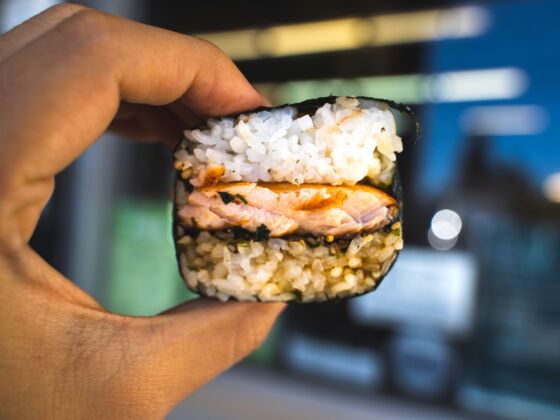

10 Classic Hawaiian Foods to Try That Aren’t Poke
The best Hawaiian food — from comforting noodle soup to spam sushi — is rooted in the islands’ rich multicultural heritage, and the dishes blend and embrace Japanese, Portuguese, Filipino, and indigenous flavors and ingredients. Other dishes are modern versions of ancient staple foods that incorporate Hawaii’s lush and abundant plant life. Hawaii’s culinary delights extend beyond fish and include canoe plants, international ingredients, and cooking techniques drawn from ancient Hawaii and its long plantation history.
“I like the fact that Hawaiian food, which was basically sustenance food in ancient Hawaii, has evolved over time and come into its own as really delicious and satisfying comfort food,” chef Keoni Chang, vice president of Foodland, Hawaii’s largest locally owned grocery store chain, tells me. “[And] a lot of items considered ‘luau food’ come from Hawaii’s ethnic diversity and history.”
Next time you’re in Hawaii, go ahead and try the poke, but also be sure to appreciate how diverse the islands’ cuisine really is. Here are 10 dishes to try in Hawaii beyond poke.
1. Saimin
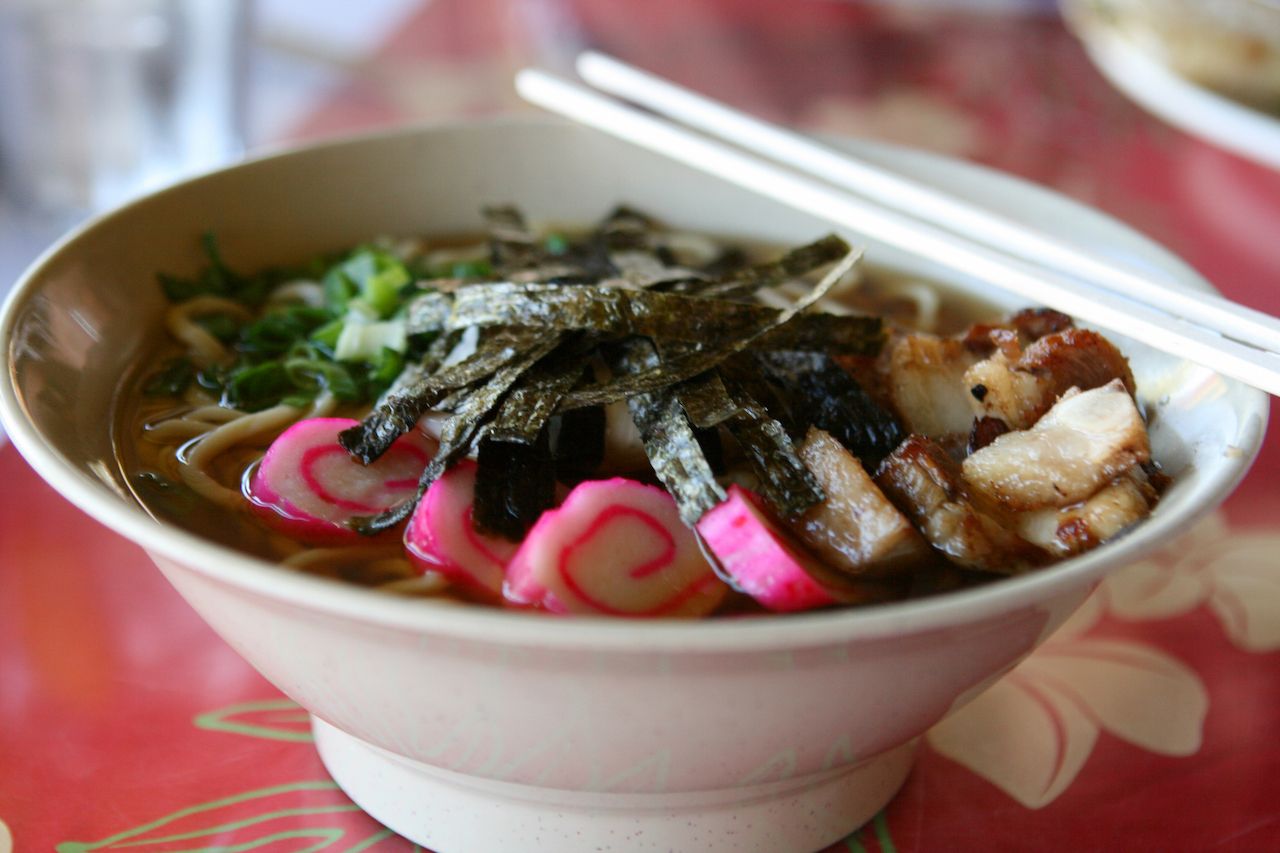
Photo: JJava Designs/Shutterstock
Saimin is Hawaii’s answer to Japanese ramen. The simple dashi-based broth is topped with char siu (barbecue pork), green onions, and pink and white fish cakes called kamaboko, swimming among springy wheat noodles. An alternative version called wun tun min is topped with pork dumplings. Saimin is so popular and widespread that you can find versions at local 7-11 and McDonald’s in Hawaii.
The name is a combination of two Chinese words: sai (thin) and mein (noodles). However, the dish’s legacy is one of intermingling cultural influences. It first appeared in the 1800s in camps set up for laborers on Hawaii’s sugar and pineapple plantations (a similarity to several other dishes on this list). Chinese, Japanese, and Filipino workers ate lunch together, trading ingredients and flavors until eventually “saimin was born,” according to an essay in Life & Thyme.
Where to try: Palace Saimin, 1256 N King St, Honolulu, HI 96817
2. Spam musubi
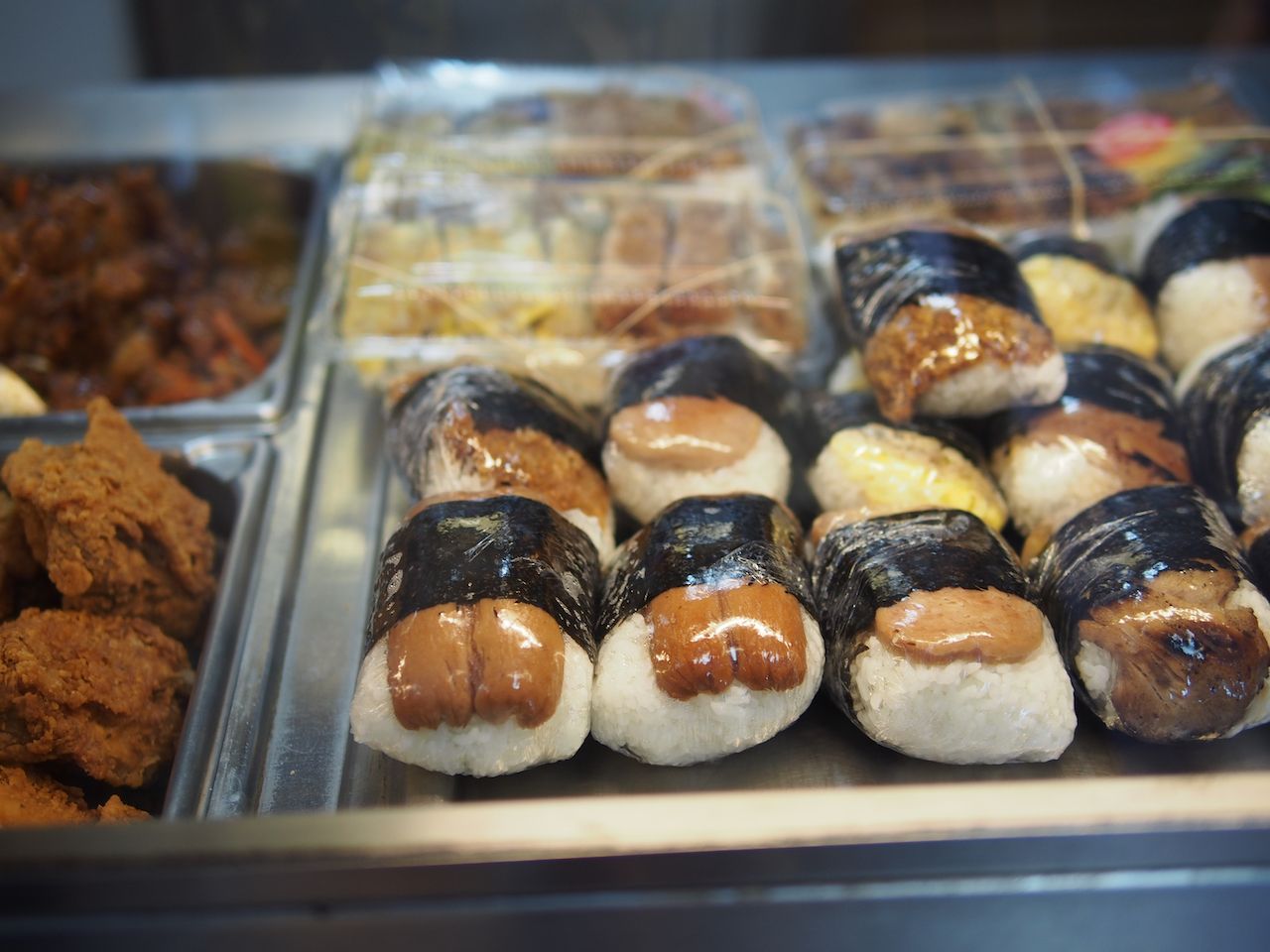
Photo: Aloha Abroad/Shutterstock
This popular convenience store snack is much beloved throughout Hawaii as a portable, on-the-go treat that’s easy to pop in your bag. It’s made by sandwiching grilled spam between two square cakes of rice wrapped in nori.
There are conflicting reports regarding who exactly invented spam musubi, though most stories agree that the snack first emerged during World War II when nearly 120,000 people of Japanese descent were interned in camps following the attacks on Pearl Harbor. Interned families were likely eager to make an approximation of onigiri — a cylindrical cake of rice wrapped in nori that’s considered a beloved comfort food — with shelf-stable Spam.
Two different Japanese-American women are often credited with creating the modern version of spam musubi that we know today in the early 1980s: Barbara Funamura sold it from her restaurant Joni-Hana while another story claims that a woman named Mitsuko Kaneshiro first made them for her children before selling them out of a pharmacy in Honolulu until she was able to open her own shop.
Where to try: Musubi Cafe Iyasume, 334 Seaside Ave, Honolulu, HI 96815 (and other locations)
3. Haupia
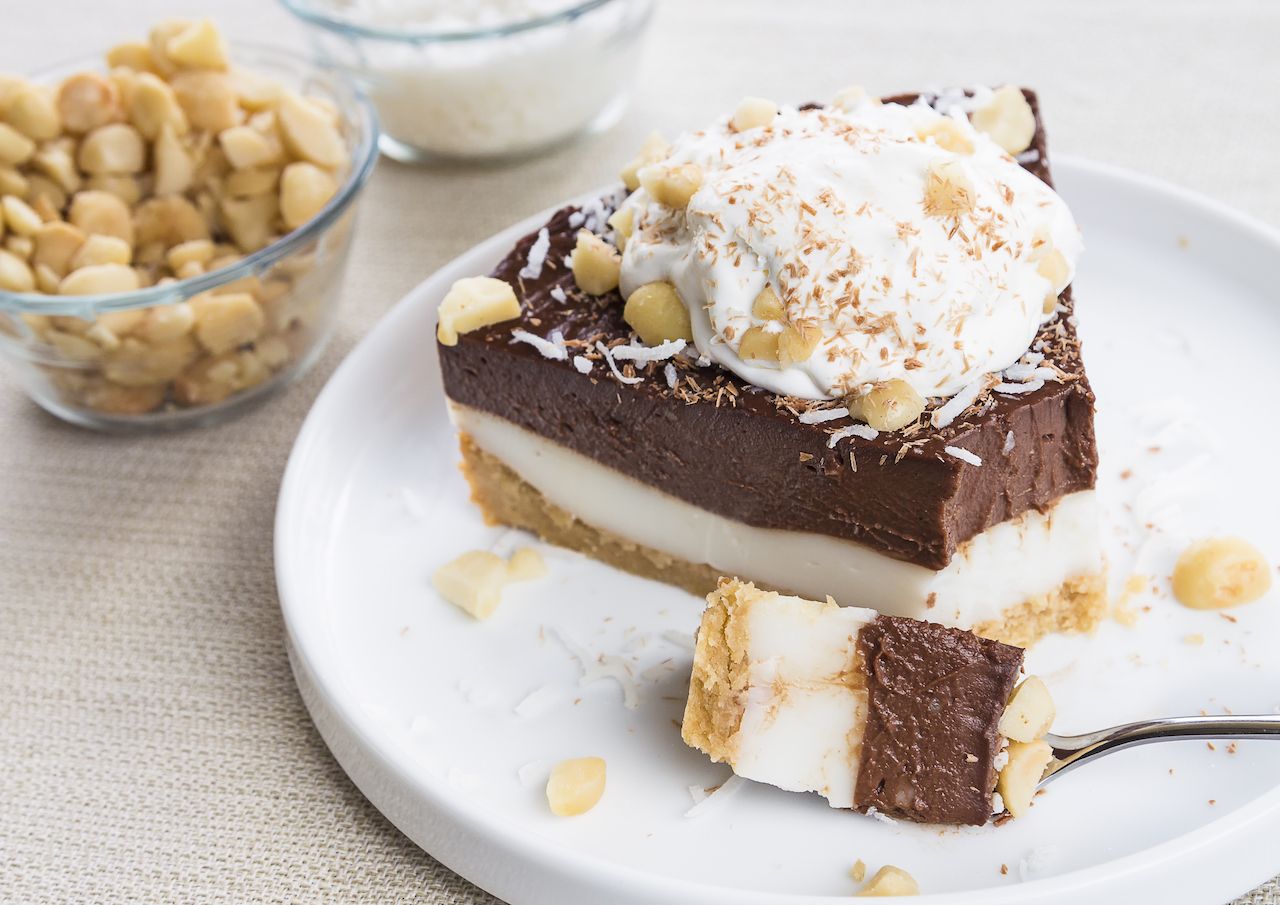
Photo: Leigh Anne Meeks/Shutterstock
This dessert is made from coconut milk, sugar, and arrowroot (or cornstarch). Though it’s sometimes called coconut pudding, the consistency is firmer and bouncier, more like a cross between pudding and Jell-O. Traditionally, haupia is cut into small squares, chilled, and served plain. You’ll very likely find it served as a side accompanying Hawaiian plate lunch (more on that soon) and at lūʻaus. However, haipua is also added to pies and ice cream, mostly famously chocolate haupia pie, sometimes called a “dessert institution” in Hawaii.
Where to try: Anna Miller’s Restaurant, 98-115 Kaonohi St, Aiea, HI 96701
4. Poi
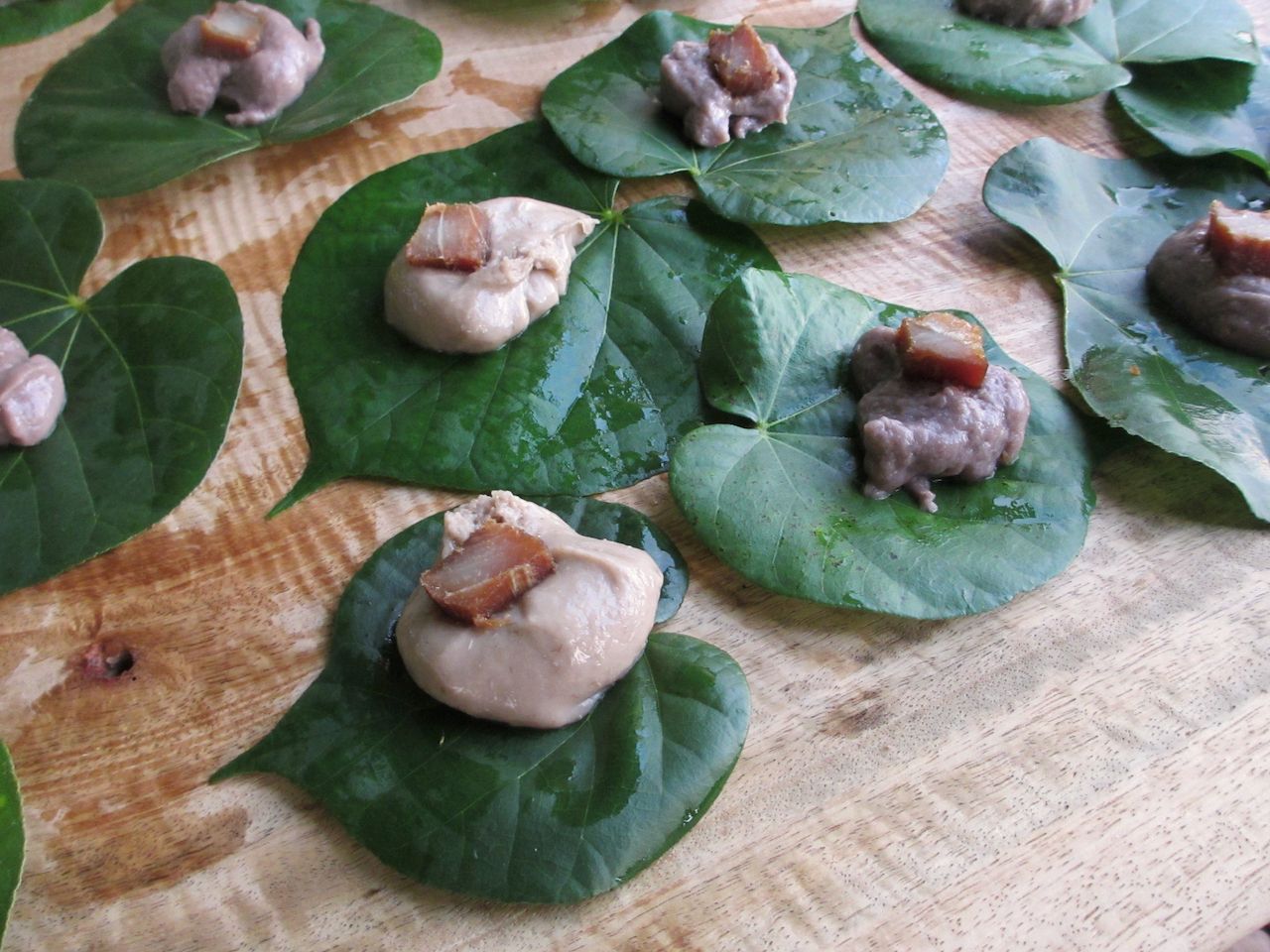
Photo: Eric Broder Van Dyke/Shutterstock
Several chefs agree that poi might be one of the most underappreciated foods in Hawaii. This ancient Indigenous Hawaiian staple food is made by pounding taro root into a purple paste on a traditional papa ku‘i‘ai, a wooden board, using a pōhaku ku‘i ‘a, a wooden pestle. Chef Jeremy Shigekane, the owner of M by Chef Mavro in Honolulu, argues that “outsiders don’t like the texture,” but that more people should “appreciate the labor that goes into such a simple dish.”
How poi is prepared and served often depends on who is making it.
“[People] look at it as a novelty, but I think the issue is that it’s served too thick,” Chang says. “I like my poi really cold. My great grandmother served it with ice cubes in it. We liked to eat it when it was three days old, when it started to sour. It had a really nice tang to it. My mouth is watering imagining fried fish, chili pepper water, and Maui onions with Hawaiian salt as a pairing with sour poi.”
Alan Wong, co-founder of the Hawaii Food Festival, has a similar preparation for poi: He tops poi with lomi lomi salmon and sprinkles chili pepper water on top. He also makes a poi stew with cubed beef.
“I think poi is misunderstood,” he adds. “The first time I ate it as a small kid, I thought it smelled like cigar smoke, and of course hated it. A lot of visitors think it’s like glue paste, but there are so many varieties of poi. It is very alkaline, and a good healthy product.”
Where to try: Waiahole Poi Factory, 48-140 Kamehameha Hwy, Kaneohe, HI 96744 (takeout only)
6. Shave ice
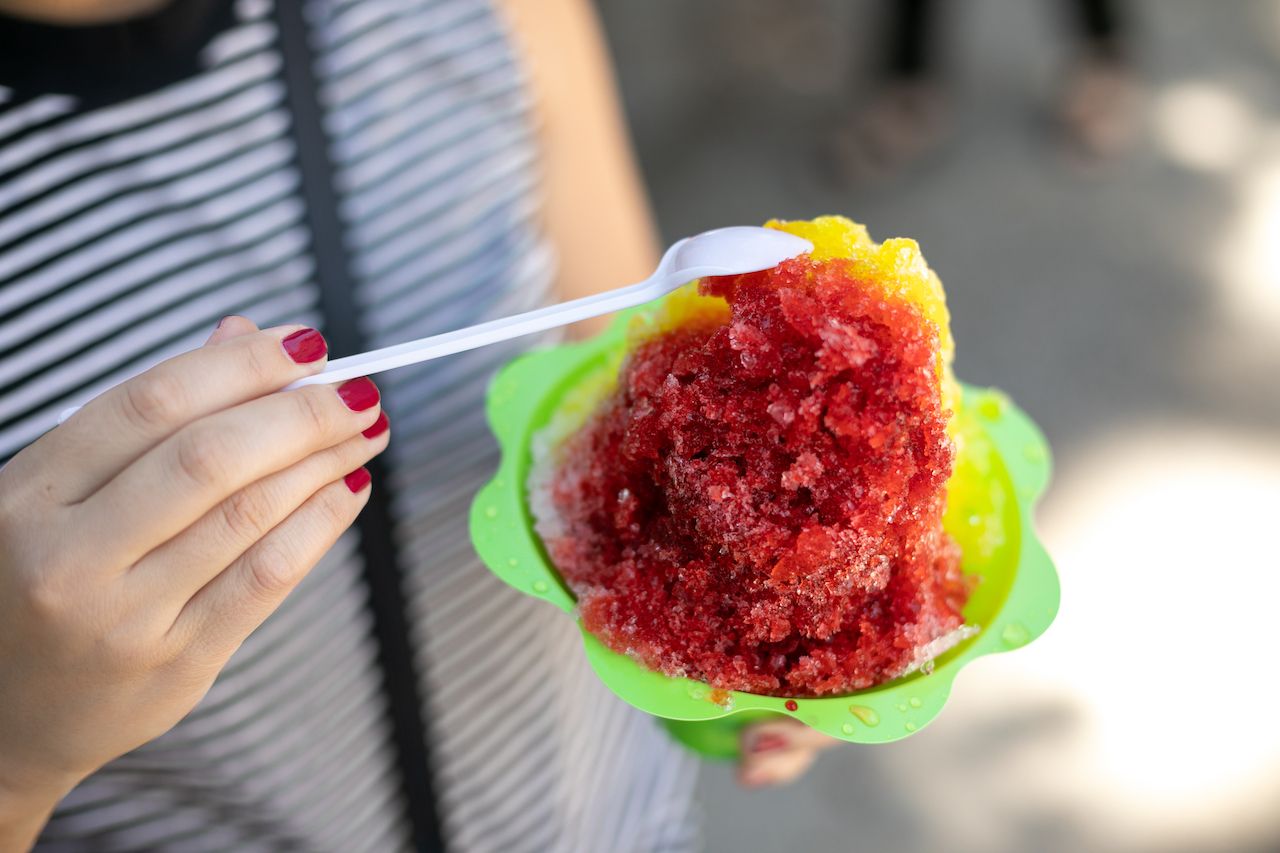
Photo: VDB Photos/Shutterstock
Locals and tourists line up for a taste of what might be considered Hawaii’s most iconic dessert: shave ice. Like so many other beloved Hawaiian foods, migrants who made their home on the islands are at least partially responsible for its proliferation. Japanese immigrants introduced their Hawaiian neighbors to kakigori in the mid-1800s, adapting the traditional Japanese dish to their new circumstances by shaving flakes off of large blocks of ice, then sweetening the concoction with sugar or fruit juice. Today, you can find shave ice flavors like lilikoi and pickled mango, and toppings like Japanese red beans.
Where to try: Matsumoto’s Shave Ice, 66-111 Kamehameha Hwy #605, Haleiwa, HI 96712
7. Loco moco
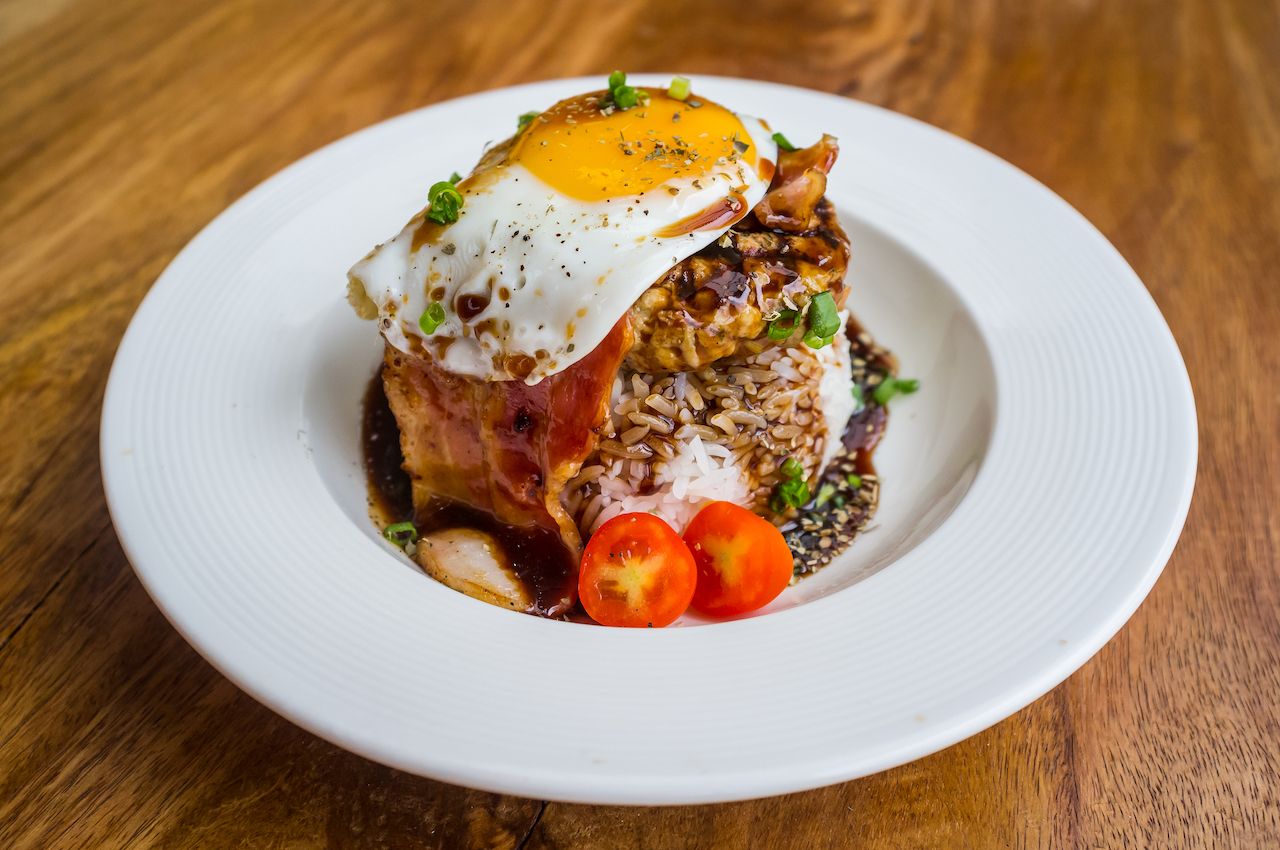
Photo: stockphoto for you/Shutterstock
Drawing inspiration from Japanese hambagu, loco moco might remind one of a disassembled hamburger served atop a bed of rice. Considered one of the island’s most iconic comfort foods, the dish consists of a hamburger patty doused in a soy-sauce-based gravy and topped with a runny sunny side up egg.
The urban legend behind the origins of the dish is fascinating and is linked to a crew of teenage boys from Hilo that was known locally as the Lincoln Wreckers and was renowned for its athletic prowess. They hung at the Lincoln Grill, and one day in 1949, being broke teens, they asked the owner to whip up a cheap but hunger-satiating meal on one of their many visits to the restaurant. In 2018, Dr. George Takahashi — a member of the Lincoln Wreckers at the time — related this tale to the East Bay Times, claiming that he and his friends came up with the name on a whim. The dish soon popped up on menus all over Hawaii. Takahashi admits that the Wreckers might not have been the first to think of the dish, but he insists they did come up with the name.
Where to try: Rainbow Drive-In, 3308 Kanaina Avenue Honolulu, Hawaii 96815 (and other locations; takeout only)
7. Luau stew
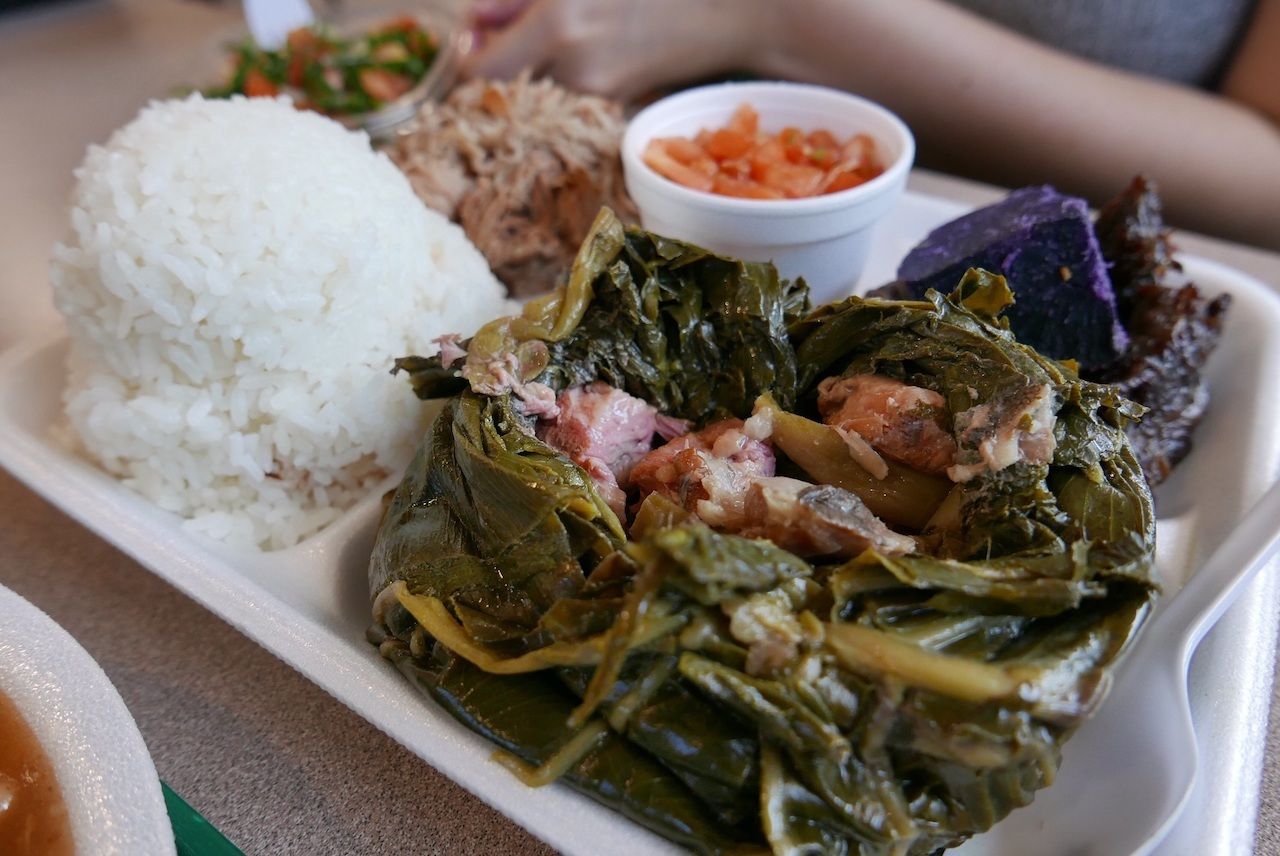
Photo: ChristopherMYa/Shutterstock
Voluptuous luau leaves — the leaves of the taro plant — take center stage in this hearty stew. Beef or pork, taro, and sweet potatoes are cooked with the leaves until they become dark green and soft, and then it’s served over rice or poi. The stew is typically cooked at home and doesn’t often appear on restaurant menus, which is one reason why Denise Yamaguchi — CEO of the Hawaiian Food Festival and Alan Wong’s colleague — says it might be underappreciated.
“Also, because it looks like green spinach soup, many who are not from here are turned off by the way it looks,” she adds. “But it’s actually really tasty and healthy, too.”
Chef Chang grows taro in his backyard, so he has direct access to fresh luau leaves, which makes preparing luau stew even more meaningful for him. His version includes beef short ribs and onions. “I love the texture and depth of luau leaves,” he says.
Where to try: Make it at home!
8. Plate lunch
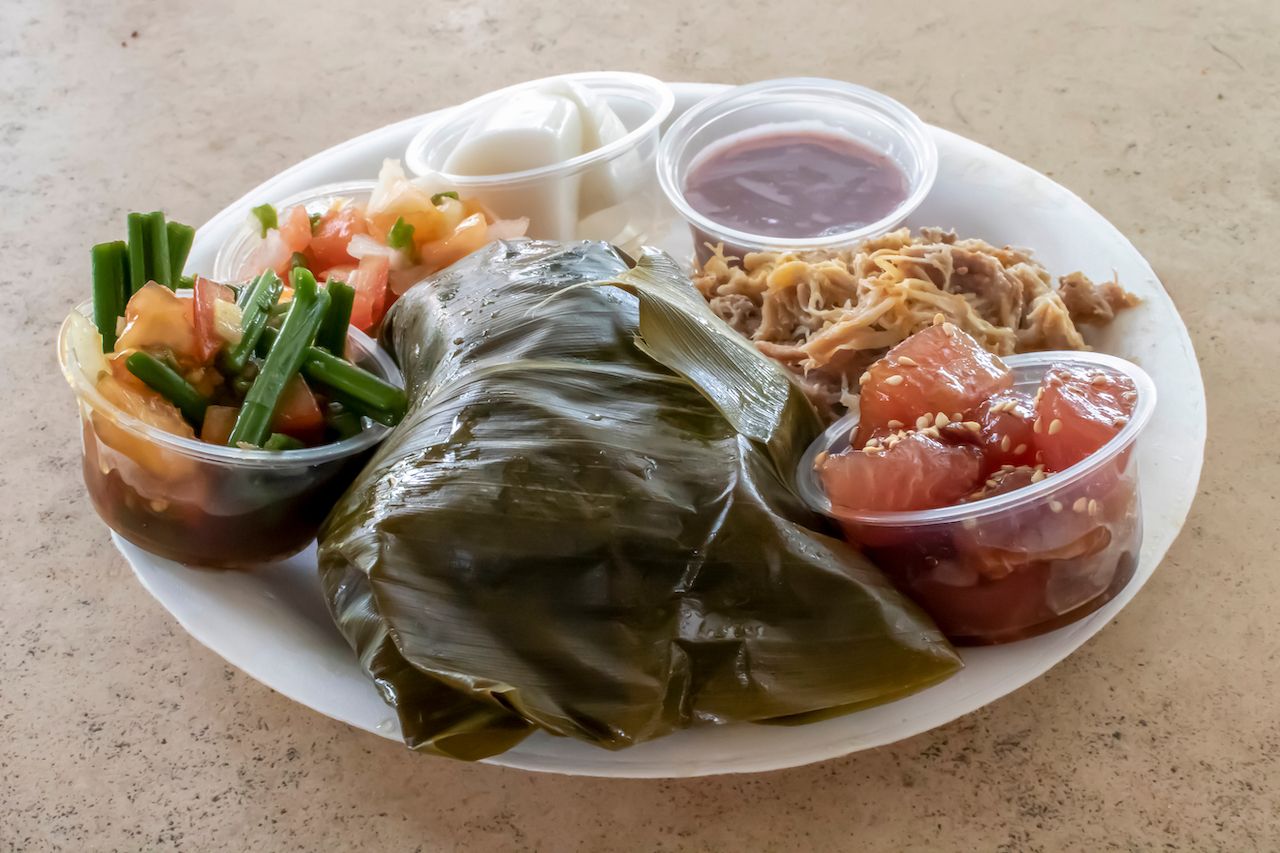
Photo: Erin Donalson/Shutterstock
Served at street vendors and diners, plate lunch is a mainstay of Hawaiian culinary culture. According to Eater, it’s a multicultural descendant of “Southern meat-and-three plates.” Though the main dish can change, it’s always served with macaroni and cheese and two scoops of rice. Plate lunch reflects the multicultural heritage of the Hawaiian islands, incorporating flavors and dishes from Japan, China, the Philippines, Korea, and Portugal. For instance, the main dish might be kalua pork, chicken katsu, Spam musubi, or loco moco.
Plate lunch dates back to the late 1800s when it was an easy, inexpensive lunch for laborers on Hawaii’s pineapple and sugar plantations. The deceptively simple name comes from the fact that by the 1930s it came to be served on paper plates. The plantation era ended but plate lunch remained a staple on the islands, and you can now find versions of it on the mainland in places like California, Texas, and New York.
Where to try: L&L Hawaiian Barbecue, 1111-B Fort Street Mall Honolulu, HI, 96813 (and other locations)
9. Garlic shrimp
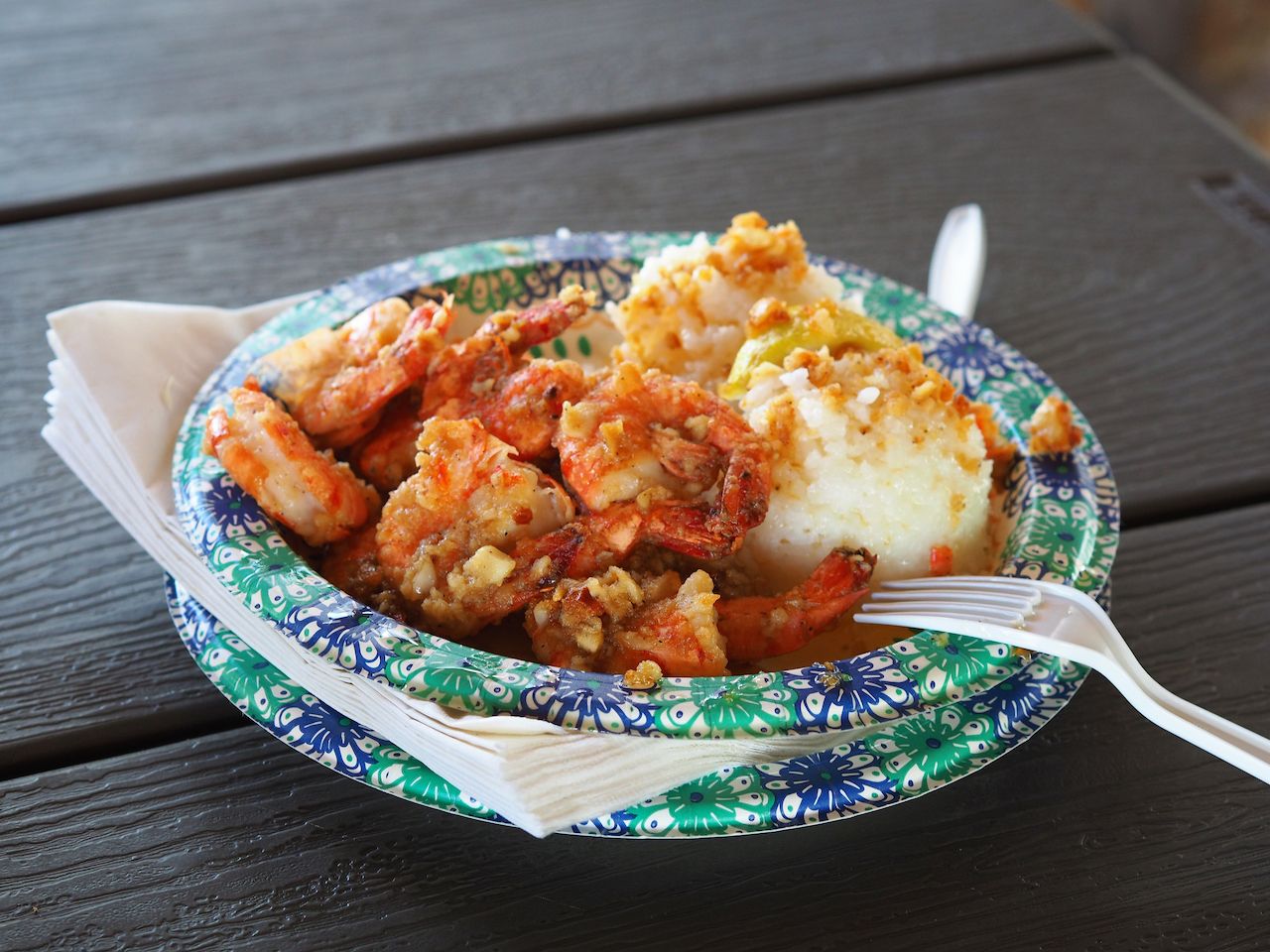
Photo: Follow2find/Shutterstock
This pungent, spicy shellfish rose to prominence thanks to the profusion of food trucks along Oahu’s North Shore. The shrimp are tossed in a mixture of paprika and cayenne, then dipped in garlic butter sauce and served on a Styrofoam tray with rice and a lemon wedge. The originator of the garlic shrimp trend was likely Giovanni’s Original White Shrimp Truck. The truck first began operating in the Kahuku area, known for its freshwater aquaculture farms, and the lines started forming. Today, there are still at least five prominent shrimp trucks parked on the North Shore that still enjoy bustling service.
Where to try: Giovanni’s, 66-472 Kamehameha Hwy, Haleiwa, HI 96712
10. Manapua
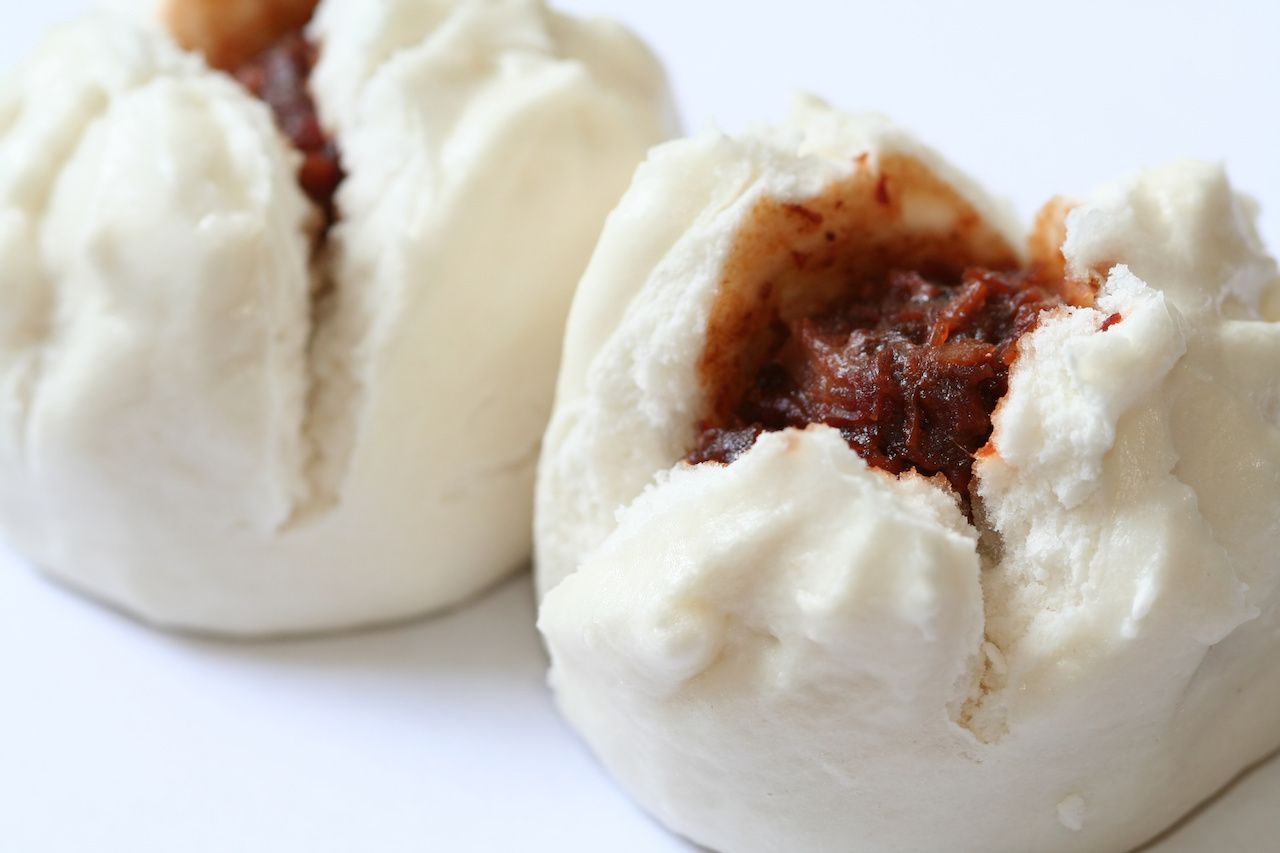
Photo: Nancy Kennedy/Shutterstock
This snack is almost identical to Chinese char siu bao, or steamed buns filled with pork. Chinese immigrants, who were hired to work on sugar and pineapple plantations, brought them to Hawaii in the 19th century. The nourishing and delicious snack proved so popular that Chinese workers began hawking them at camps set up for plantation workers. In the 1970s, these pork bun hawkers evolved into mobile vendors known as the Manapua Man. These vendors are still ubiquitous throughout the islands, but instead of selling their edible wares from baskets or carts, they set up shop in business districts and near beaches in cargo vans.
The original name was mea ono pua’a — a combination of the words for cake or pastry and pork — but it was eventually shortened to manapua. Typically, manapua is filled with pork and sweet red-bean paste. Legendary restaurateur Bat Moi Kam Mau, the owner of Char Hung Sut, is especially famous for popularizing manapua with local Hawaiian flavors, like sweet potato, laulau, and kalua pork.
Where to try: Aiea Manapua & Snacks, 99-149 Moanalua Rd #103, Aiea, HI 96701